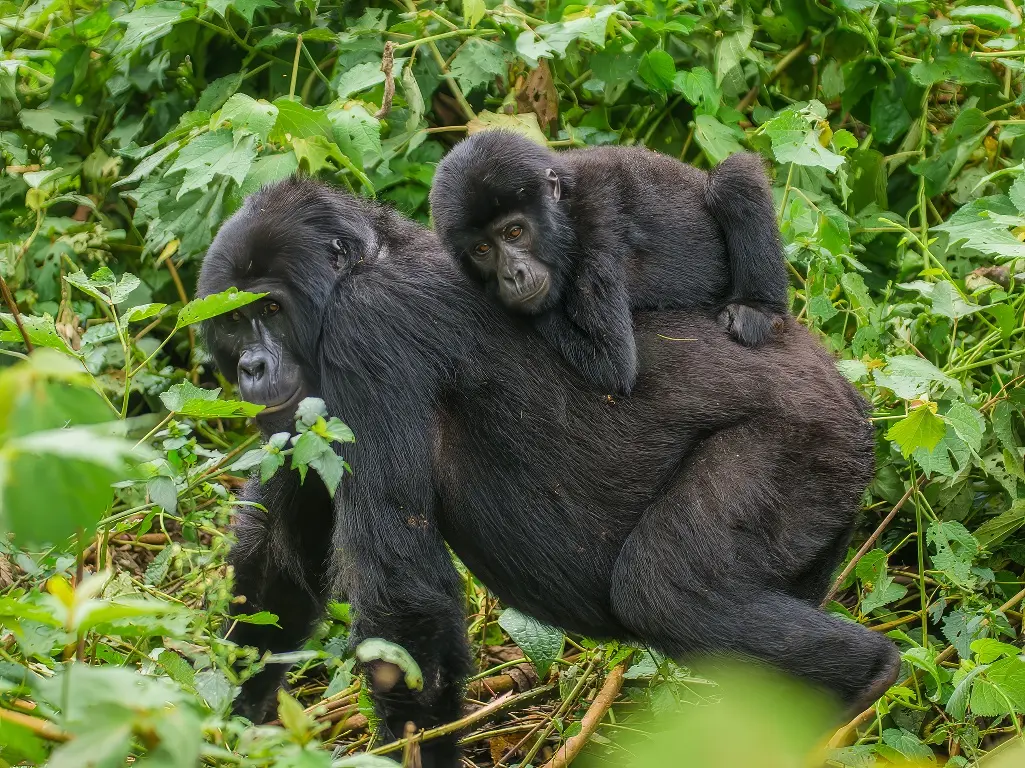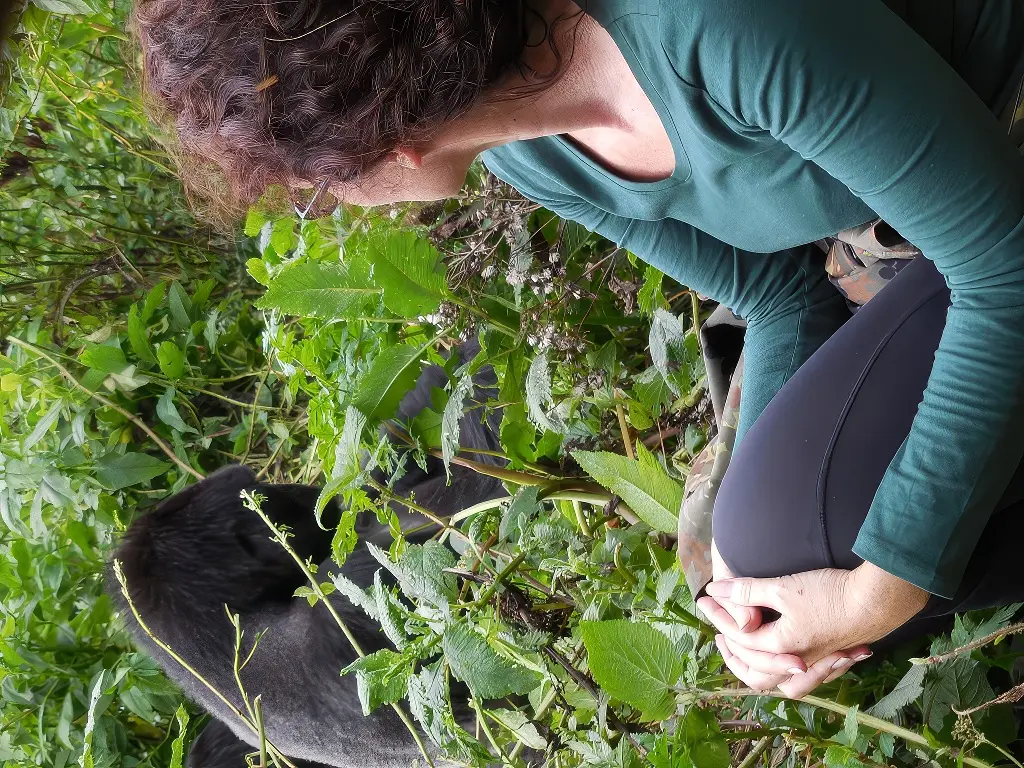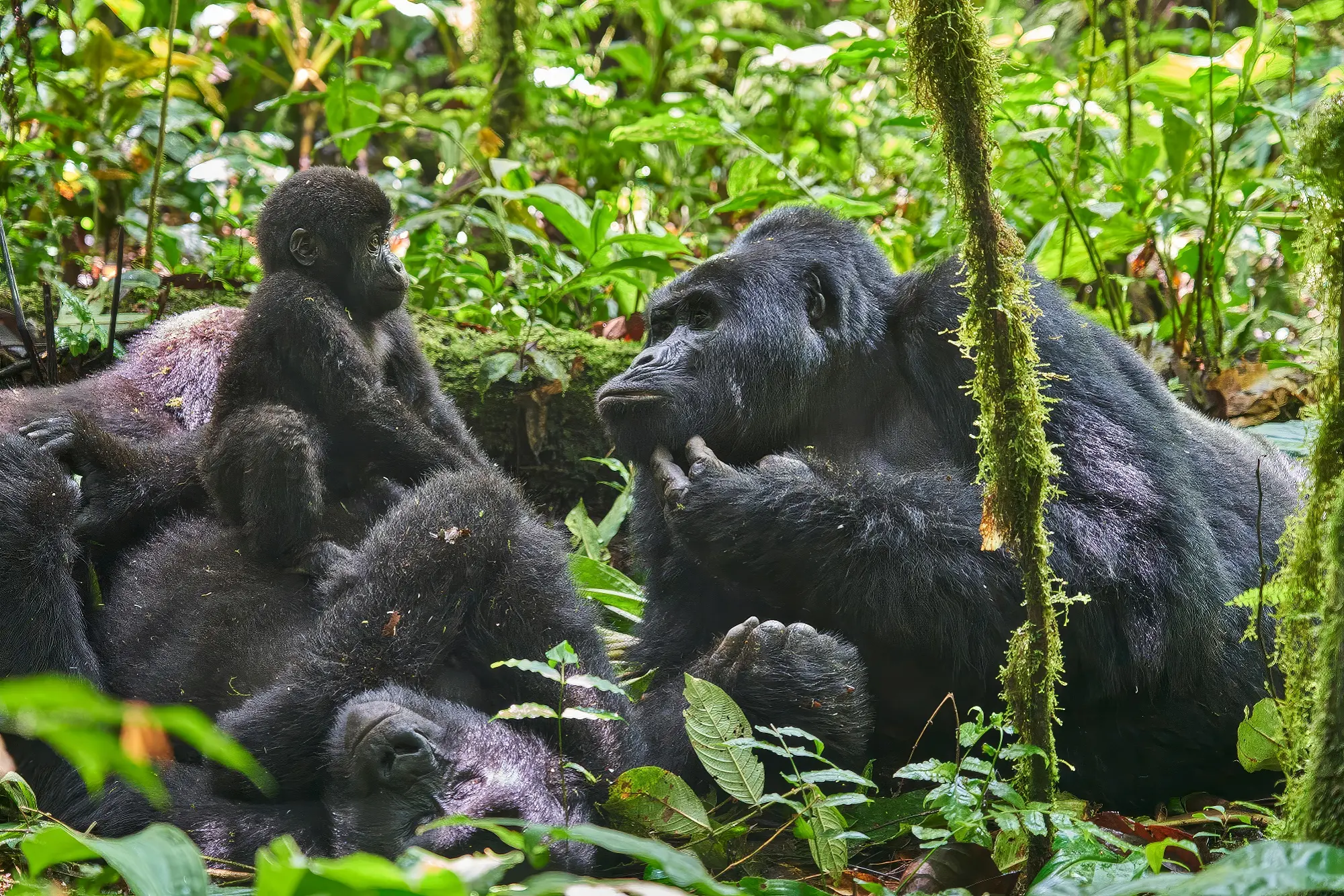Every encounter with the Mountain Gorillas is different. A once-in-a-lifetime experience.
I first tracked the gorillas in Bwindi Impenetrable Forest in Uganda. The climb through the mist-covered slopes of the jungle and a nearby tea plantation were a magical start to the whole experience. When we encountered the gorillas, we felt very at ease in each other’s company, and matter-of-fact, the Silverback slept through our entire hour together! The highlight was watching a baby gorilla hanging by one arm, eyeballing us from the moss-covered trees above.
I couldn’t recommend making this trip to see the gorillas more. It’s truly a bucket-list experience that I’ve been blessed to do multiple times!
If you are also keen on setting off on this adventure, here is the perfect guide to get you started:

Where can I see the Mountain Gorillas?
The Mountain Gorilla population straddles three countries: Uganda, Rwanda and the DRC.
Uganda’s Bwindi Impenetrable National Park supports the largest population of Mountain Gorillas. Buhoma, to the north of the forest, is the most popular place to stay. Nkuringo, Rushaga and Ruhija, to the south, also give access to gorilla families. There is one very engaging gorilla family in Uganda’s Mgahinga Gorilla National Park.
Rwanda’s gorillas inhabit Volcanoes National Park, an area made famous by the primatologist Dian Fossey, who is buried there, right next to her beloved gorilla- Digit. Gorilla tracking in the Congo’s Virunga National Park Congo is becoming popular again, although tracking opportunities are limited.
Uganda Wildlife Authority Gorilla Trekking Permits
Sales of gorilla permits have made a significant impact on the recovery of the mountain gorilla populations, from 254 individuals in the 1980s to 880 in 2013. However, they remain critically endangered and are under 24-hour security with their movements and health constantly being monitored.
During a trek, you have an over 95% chance of seeing the gorillas and tracking permits are therefore highly sought after. A maximum of 8-10 people over age 15 can visit each family per day during a single one-hour session.

When is the best time to see the Mountain Gorillas?
December to February and between June and August are the best time to trek Gorillas. Although you can track throughout the year, some prefer to avoid the rainy seasons (March to April and October to November). However, there is a high chance of a shower most days (clue: you’re in the rainforest!)
If you’re tracking in Rwanda in September, you are invited to attend the Kwita Izina gorilla naming ceremony, a celebration of Rwanda’s gorilla conservation success.
What can I expect when I’m tracking the gorillas?
Tracking the gorillas is non-technical but mostly uphill through vegetation so does require stamina. It’s therefore important to pack the right equipment and plenty of water. (It’s easy to become dehydrated at high altitudes especially when you are absorbed by the beguiling primates). Hire a porter and support the local community with a few hours’ employment.
No tourist has ever been seriously hurt by a habituated gorilla. However, it’s important to follow all the directions from the rangers for you and the gorillas’ protection. One hour is allowed with the gorillas, at a distance of at least seven metres. You must not touch them, even if they come close. Gorillas and humans share 98% of the same genes meaning our giant vegetarian cousins are highly susceptible to many of our diseases; you should not go tracking if you have diarrhoea, a cold or the flu.
Tracking starts with an early morning briefing by the rangers. The fittest trackers are given the gorilla families that are distant or at high altitude. Expect the track to take one to three hours each way.
During your hour with the gorillas, you may watch them sleep, feed, groom or climb trees. On one occasion, a female gorilla walked right through the middle of our tracking group with her twin babies in tow!Every encounter is different. Your hour may pass quickly so remember to come out from behind the camera occasionally and enjoy the moment. Simply recalling being in the presence of these magnificent creatures still brings a smile to my face. Back at base, successful trackers will be given their gorilla tracking certificate. Talk about Bragging rights!

Article by Charlotte Beauvoisin
